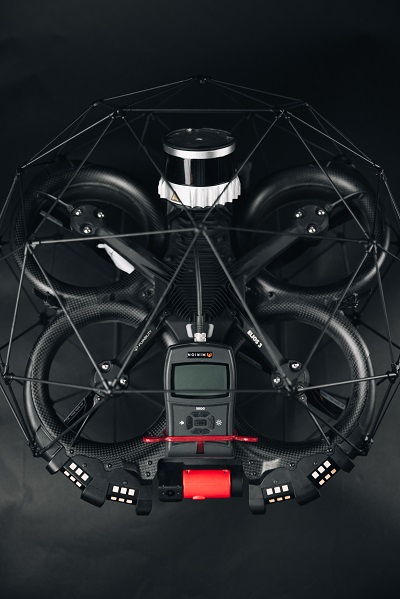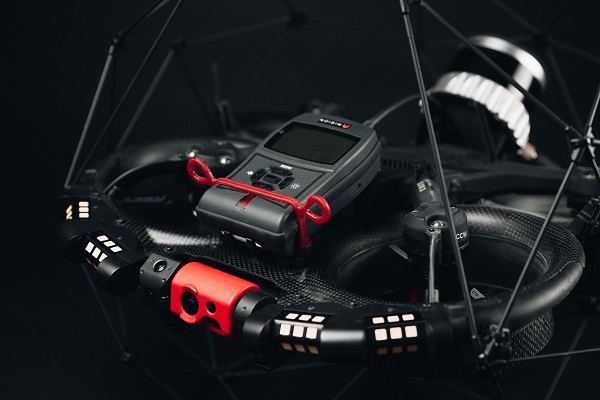With the announcement of a new collaboration with Mirion Technologies on a radiation survey payload, Flyability has added even more capability to its Elios 3 indoor inspection drone. Through the collaboration, the Mirion RDS-32™ radiation survey meter integrates with the lidar of the Elios 3. This, according to a statement from Flyability, “allows users to map the environment while collecting radiological data to then localize their data in a high-resolution 3D model of their asset.”
 Flyability asserted that the integration “makes the Elios 3 the first commercially available drone able to perform remotely operated indoor radiation surveying and localization” and “offers a way for nuclear personnel to collect data while remaining safely outside of irradiated areas.”
Flyability asserted that the integration “makes the Elios 3 the first commercially available drone able to perform remotely operated indoor radiation surveying and localization” and “offers a way for nuclear personnel to collect data while remaining safely outside of irradiated areas.”
Introduced in May 2022 and showcased at the 2022 Commercial UAV Expo in Las Vegas, the Elios 3 was created to address the challenges of achieving reliable performance with drones in inspections. Speaking with Commercial UAV News at the time of the product launch, Flyability’s Senior Communications Manager Zacc Dukowitz explained that drones “face unique environmental challenges” when operating in confined spaces, including the lack of GPS, problems geolocating the drone in space, and the threat of collision.
Dukowitz said that the Elios 3 is “collision tolerant” and offers other features to improve reliability in inspection work. “The Elios 3 is powered by a new proprietary SLAM engine called FlyAware. This engine is what gives the Elios 3 its groundbreaking stability,” he stated. “FlyAware combines data from the Elios 3’s three optical cameras and its lidar sensor to create world class awareness of where the drone is in three-dimensional space, catching the smallest unpredictable movements and instructing the flight controller to compensate for it so the drone stays so still in the air that a video looks like a photograph.”
In the year since its introduction, the Elios 3 has earned praise for its ability to enable inspections in mines, at utility sites, and in other challenging environments. Now, with the introduction of this new radiation survey payload, the drone is poised to take on even more difficult work, including inspections at nuclear facilities.
According to Flyability, the new payload integration was tested at nuclear sites in the US and in Europe. Moreover, the system has been used by Radiological Protection Specialists and UAS Program Managers to monitor hydraulic leaks, measure dose rates to assess the ability to perform maintenance, and more.
In addition, Flyability said, “the Elios 3 has also been tested for radiation resistance during a project performed with the DOE and the Idaho Environmental Coalition (IEC). Results have demonstrated Elios 3 resistance to radiation up to 10,000 R/h and a cumulated dose of 4,000 R.”
The system’s ability to operate in these challenging environments hinges on several features. For example, a widget has been added to “Cockpit,” the Elios 3’s piloting app. This widget, Flyability stated, offers drone pilots “a live reading of the sensor including current dose rate to characterize radiation sources, cumulated dose to allow for radiation planning, and measurement history to visualize measurement trend and search for higher radiation sources.”
In addition, the integration ensures that flights can be reviewed by “Inspector,” Flyability’s data processing software, to create reports. As described by Flyability, “the radiation data is conveniently displayed on a 3D map of the asset showing the drone’s trajectory, the radiation level along the flight path, cumulated dose over a selected portion of the flight, and specific dose rate measured at points of interest.”















Comments